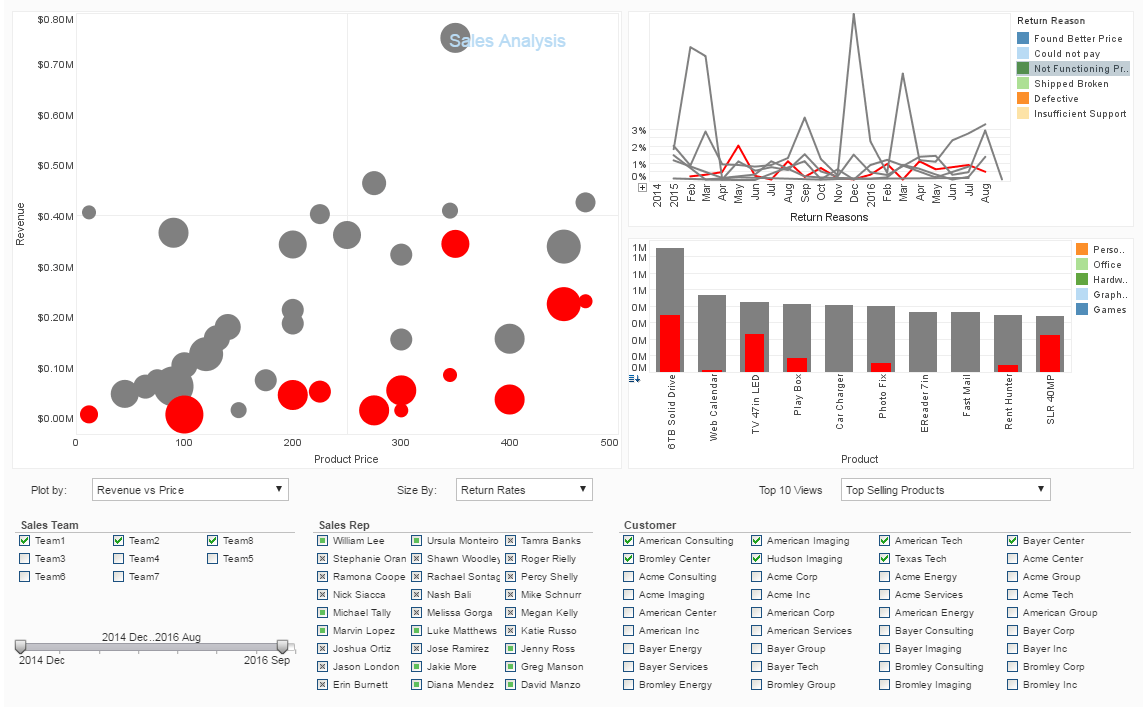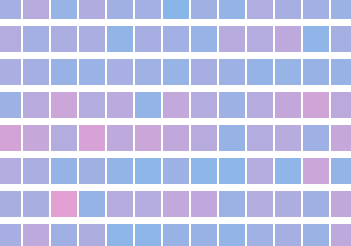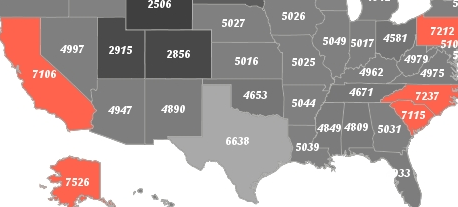InetSoft Product How-To: Dashboard Software Sliders
Dashboard software sliders allow you to control the range of the information displayed in your visual analysis or executive dashboard. View the example to the right to see one that is filtering the date range that applies to each of the charts in the interactive data visualization.
Click the buttons here to view a demo of InetSoft's dashboard application or to register for more information including to request a personalized demo and pricing information. Read below to learn more about the how-to for the InetSoft solution's range sliders.




The Range Slider element filters data to fall within a specified range. It can be used on both Date fields and Numeric fields, and provides the ability to filter data by consecutive dates or numbers. To create a Range Slider, follow the steps below:
- Drag a Range Slider element from the Component tree into the Viewsheet grid.
- Drag a Data Block column (from Repository Tree or Viewsheet Table) the onto the Range Slider element. This binds the Range Slider to the selected column.
- Adjust the selection range by dragging the slider endpoints. You can also bind the range slider to a column from the Data tab of the �Range Slider Properties� dialog box.
In this example you will use a Range Slider to filter sales based on both date and quantity. Follow the steps below:
- Create a new Viewsheet based on the �ProductSales� Worksheet.
- Drag a �Range Slider� element from the Component tree into the Viewsheet grid.
- Expand the ‘SalesByDate’ Data Block, select the ‘Date’ field, and drag it onto the Range Slider element.
- Adjust the size of slider unit by dragging the outer handles.
- Adjust the selection range by dragging the slider endpoints.

InetSoft Viewpoint
"The open standards aspect is very important to us since it allows our customers to integrate our technology more easily and leverage assets they already have, in terms of hardware and software and IT skills. So based on this BI platform, our software delivers a host of front-end BI tools including visualization tools, enterprise reporting, monitoring dashboards, and analysis. Those functions were based on a very powerful patent-pending technology we call Data Block.
This Data Block technology is really made up of a back-end data mashup engine and a caching middle layer. There is a front-end we call the worksheet, which is a web-based, spreadsheet-like user interface that a power user can easily use to combine and transform data blocks. The data blocks are typically started at the atomic data block level. That is typically created by an IT or a BI specialist. They choose these data blocks and performance tune those data blocks.
Then the power users can use those building blocks to build more complex, but more useful structures for answering the questions they have on hand. And all the data blocks you build, in turn become building blocks themselves. You can build on this architecture, building very sophisticated structures which you can use to answer a wide range of unanticipatible questions. " - Luke Liang, CEO, InetSoft
| Previous: Interactive Dashboard Lists |